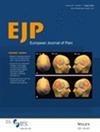Methods for identifying high-pain responders undergoing total knee arthroplasty remain important to improve individualized pain management. This study aimed at evaluating pre- and perioperative predictors of pain on Days 2–7 after total knee arthroplasty.
This is a secondary analysis of data from 227 patients participating in two randomized trials. Pain outcomes were mean pain during walking on Days 2–7 and on Days 2, 4 and 7. Multivariable linear and logistic regressions were carried out in two steps. First, only preoperative available variables including demographics, comorbidities, pain catastrophizing scale and preoperative pain were evaluated while controlling for trial intervention and recruitment site. In the second step, perioperative variables and pain during walking 24 h postoperatively were added.
The model with only preoperative predictors for mean pain Days 2–7 showed preoperative pain (R-squared 0.097) as the only predictor. In the second model, adding postoperative available variables, only pain 24 h postoperatively (R-squared 0.248) was significant, with a significant main effect of recruitment site. Results for the separate day analysis similarly showed preoperative pain and pain during walking 24 h postoperatively as predictors. The overall best sensitivity (60%) and specificity (74%) for predicting a high-subacute postoperative pain response on Days 2–7 was with cut-off values of VAS 45.5 (out of 100) for pain during walking 24 h postoperatively.
Postoperative pain during walking at 24 h is predictive of subacute postoperative pain on Days 2–7 after total knee arthroplasty, while preoperative pain was only a weak predictor.
This study investigated factors associated with pain after total knee arthroplasty beyond the immediate postoperative period. The analysis revealed significant associations between preoperative pain levels and, particularly, pain 24 h postoperatively, with subsequent subacute pain the following week. These findings can assist in identifying patients who would benefit from enhanced, individualized analgesic interventions to facilitate postoperative recovery.


